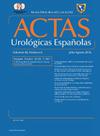Comparación de la litotricia con láser de fibra de tulio y láser Holmium:YAG en la cirugía retrógrada intrarrenal para el tratamiento de cálculos renales: estudio prospectivo aleatorizado
IF 1.2
4区 医学
Q3 UROLOGY & NEPHROLOGY
引用次数: 0
Abstract
Objective
This study compares the clinical outcomes of Holmium:YAG (Ho:YAG) laser lithotripsy and Thulium Fiber Laser (TFL) lithotripsy in retrograde intrarenal surgery (RIRS) for kidney stones < 20 mm.
Materials and Methods
Patients who underwent RIRS for renal stones < 20 mm between September 2022 and November 2023 were prospectively analyzed. They were randomly assigned to either the TFL or Ho:YAG laser group using a sealed-envelope method. Preoperative demographics, stone characteristics, kidney-ureter-bladder x-ray (KUB), ultrasound and noncontrast computer tomography (NCCT) scan findings were recorded. Operative time, laser usage time, postoperative stone-free rate (SFR), and complications were assessed and statistically analyzed.
Results
A total of 126 patients (mean age: 49.16 ± 15.18 years; 64.3% male, 35.7% female) were included. The TFL group (n = 64, 50.8%) had significantly shorter operative and laser usage times than the Ho:YAG laser group (n = 62, 49.2%) (operative time: 45.77 ± 15.67 min vs. 52.79 ± 18.11 min, p = 0.031; laser usage: 29.84 ± 13.32 min vs. 36.39 ± 15.75 min, p = 0.024). No significant SFR difference was found between groups (TFL group: n = 57, 91.8% vs. Ho:YAG laser group: n = 60, 93.8%; p = 0.488).
Conclusion
In the treatment of kidney stones smaller than 20 mm using laser lithotripsy, both TFL and Ho:YAG laser are effective, safe, and associated with low complication rates. However, the use of TFL significantly reduces operative time and lithotripsy time, potentially improving surgical efficiency. Further studies with larger patient cohorts are necessary to validate these findings and provide additional insights into the advantages and limitations of each laser type.
结石术与郁金香纤维激光和钬激光的比较:YAG在肾内逆行手术中治疗肾结石:一项前瞻性随机研究
目的比较钬激光碎石(Ho:YAG)和铥光纤激光碎石(TFL)在肾结石(20mm)逆行肾内手术(RIRS)中的临床效果。材料与方法对2022年9月至2023年11月行RIRS治疗肾结石(20mm)的患者进行前瞻性分析。他们被随机分配到TFL或Ho:YAG激光组,采用密封包膜法。记录术前人口统计学、结石特征、肾-输尿管-膀胱x线(KUB)、超声和非对比计算机断层扫描(NCCT)扫描结果。对手术时间、激光使用时间、术后结石游离率(SFR)、并发症进行统计分析。结果共纳入126例患者,平均年龄49.16±15.18岁,男性64.3%,女性35.7%。TFL组(n = 64, 50.8%)的手术时间和激光使用时间明显短于Ho:YAG激光组(n = 62, 49.2%)(手术时间:45.77±15.67 min vs. 52.79±18.11 min, p = 0.031;激光使用时间:29.84±13.32 min vs. 36.39±15.75 min, p = 0.024)。两组间SFR差异无统计学意义(TFL组:n = 57, 91.8%; Ho:YAG激光组:n = 60, 93.8%; p = 0.488)。结论激光碎石治疗小于20mm肾结石,TFL和Ho:YAG激光均有效、安全,并发症发生率低。然而,TFL的使用显著减少了手术时间和碎石时间,潜在地提高了手术效率。有必要对更大的患者群体进行进一步的研究,以验证这些发现,并进一步了解每种激光类型的优点和局限性。
本文章由计算机程序翻译,如有差异,请以英文原文为准。
求助全文
约1分钟内获得全文
求助全文
来源期刊

Actas urologicas espanolas
UROLOGY & NEPHROLOGY-
CiteScore
1.90
自引率
0.00%
发文量
98
审稿时长
46 days
期刊介绍:
Actas Urológicas Españolas is an international journal dedicated to urological diseases and renal transplant. It has been the official publication of the Spanish Urology Association since 1974 and of the American Urology Confederation since 2008. Its articles cover all aspects related to urology.
Actas Urológicas Españolas, governed by the peer review system (double blinded), is published online in Spanish and English. Consequently, manuscripts may be sent in Spanish or English and bidirectional free cost translation will be provided.
 求助内容:
求助内容: 应助结果提醒方式:
应助结果提醒方式:


